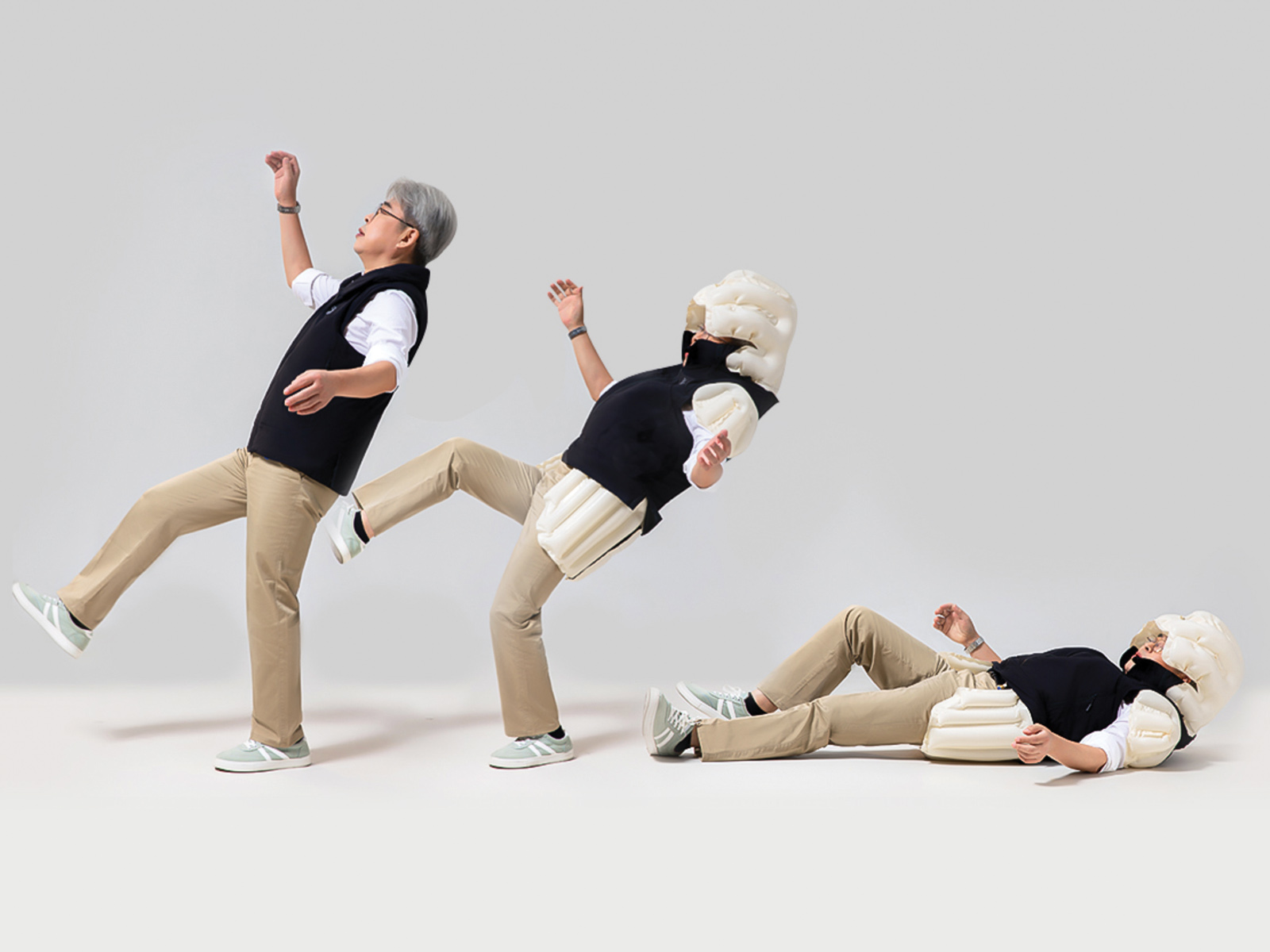Social Health and Aging
By Tal Spalter, PhD
“I often wonder who will be the last person to see me alive. If I had to bet, I’d bet on the delivery boy from the Chinese take-out…Whenever he comes I make a big production of finding my wallet… I try to make a point of being seen…All I want is not to die on a day when I went unseen.”
—The History of Love, Nicole Krauss
At the individual level, social health is defined as the health and well-being of a person as it relates to his or her ability to interact with other people. Socially healthy people can form secure, meaningful and close relationships with others. In addition, they can socialize and get along with others, mobilize their various networks, give and receive support, and be actively engaged in the community. From a societal perspective, social health also includes the interconnected nature of people in the society. Thus, it relates to how balanced the society is in offering every member an equal opportunity to access resources and
contribute to the collective wellness.
The components of social health include both health and social aspects, which are interconnected. The social component includes networks, support, engagement, exclusion and isolation; the health components are mental health, health behaviours, quality of life and well-being. Well-established social networks with high-quality connections create intimacy, social integration, a sense of belonging, self-reassurance and group identity, and foster access to new contacts, support and information. Through the provision of some or all of these factors, individuals can gain better physical and mental health, understand risk/health behaviours and services, and attain greater life satisfaction and quality of life.
The importance of social health in old age
Along the life course, and especially in later life, people need to adapt to changes. From changing roles such as grandparenting or retirement; through coping with losses of loved ones; or adapting to new challenges along the aging process (e.g., health changes, disability, re-partnering, moving to a nursing home)—adjustments are needed. Seniors who remain actively engaged with society and who maintain and develop significant connections with those around them are known to adapt better to changes. Consequently, this results in better health and well-being.
However, 20 per cent of Canadian seniors said they infrequently participated in social activities, while 24 per cent said they would have liked to have participated in more social, recreational and group activities in the past 12 months. Moreover, 19 per cent of seniors felt left out, a lack of companionship or isolated from others.
 Assessing social health in older adults
Assessing social health in older adults
Nicole , a 76 year-old widow, had a busy and meaningful social life. She regularly danced at the senior centre and was very active in the community, working as a volunteer and as president of the tennis club. After falling down the stairs in her house and spending some time in hospital with her injuries, Nicole returned to her own home. Now, Nicole seems to walk only with the help of her daughter and a walker. Her family always finds her in her pajamas, and she is fearful of going up and down the stairs. She has quit the tennis club and dancing, and her family doctor has taken her driver’s license away. Nicole cries a lot and tells her family that she feels she is losing touch with everybody because she cannot safely navigate her house or leave it without help.
Assessment is a process of collecting information to identify an individual’s needs and tailor interventions to improve their
situation. Professionals (e.g., physicians, social workers, nurses) working with seniors and their families in institutions and the community should be knowledgeable about the risk factors for becoming “socially unhealthy.” These include:
• being unmarried, living alone or having a small, geographically spread out or broken family
• low socioeconomic status
• infrequent contact with network members
• not participating in social activities
• perceiving oneself as lonely and as having poor social support
• having few or no social roles
• health or mental problems, particularly comorbidities that result in frailty and disability
• transportation problems or living somewhere remote
• language and literacy barriers (including technological ones)
• being an immigrant
Other older adults who might be at risk include: those with certain personality characteristics, such as a lack of ability to reciprocate, self-disclosure, lack of social competence or self-confidence problems; those with a lack of awareness of social needs or who are socially isolated; ethnic groups and minorities; stigmatized older adults (e.g., LGBT [lesbian, gay, bisexual, transgender] adults (or those with developmental disabilities); seniors with disabilities; and those who have heavy family responsibilities (e.g., senior caregivers). Each of these risk factors—and particularly where several coexist—can lead to social isolation, resulting in poor health and quality of life in old age.
In the case study above, the health professionals who visit Nicole at her home should be aware that she is at risk for social unhealthiness. They might want to interview her not only about the health components in her life, but also about the recent changes in her social life. A thorough and systematic assessment should include questions about the social networks and type of support (personal, emotional or instrumental) that are available to Nicole, who is receiving support from (formal and informal systems of support), her extent of social engagement and any feelings of loneliness or isolation that she is experiencing.
• How often is someone available to you to help with daily chores if you were sick or show you love and affection?
• Whom can you really count on to listen to you?
• Over the last month, about how often did you get together with friends or relatives, like going out together or visiting in each other’s homes?
• How often have you attended a religious service during the past month?
• In the last 12 months how often have you felt lonely or isolated?
These instruments are useful for identifying the significant others connected to a person, determining what potential and actual resources are available to an individual in case of need and assessing whether existing relationships are satisfactory. All of these questions provide insight into a person’s social needs. Overall, the use of a proper outcome tool can serve as a starting point for an open and meaningful dialogue between professionals and clients regarding their social health. In turn, this can serve as the basis for an intervention.
Improving older adults’ social health
There are several types of interventions aimed at improving social health for older adults. One-to-one interventions typically involve a professional or volunteer directly helping a senior. “Befriending” is a common example of this type of intervention, which provides the client with social support through the development of an emotion-based relationship over time. Volunteers or paid workers visit seniors at their residences on a regular basis, and might take them out for a walk or for small errands and mostly serve as companions.
Mentoring is another common one-to-one intervention, in which professionals work with clients to achieve specified goals
(e.g., building social skills) and ensure they are able to continue and sustain any achieved changes. A second type of intervention is group services. In this case, seniors are engaged in groups that are designed to meet their social needs (e.g., dancing, reading, support groups). Through these groups, seniors are able to widen their social circles, further develop social skills and discuss important issues (e.g., losses, friendship), while engaging in activities that promote health and well-being.
Activities that relate to wider community engagement and service provision are the third type of intervention. These programs support individuals to increase their participation in existing pursuits and volunteering schemes (e.g., providing visitor information in hospitals, sharing their life history with students). The goal is to help seniors become part of the community.
Regardless of the type of intervention, seniors who participate in such programs report less social isolation and loneliness, fewer depressive symptoms, reduced use of services, and better physical health and quality of life. Group interventions have been found to be more effective than one-to-one support or programs that provide a social activity role to fulfill. Components that are central to success include: building community capacity; involving older adults in the planning, implementation and evaluation stages of the intervention; and basing the intervention on direct human contact between facilitators and clients.
What else can be done?
There is still a lot to do to improve the social health of Canadian seniors. Local groups and communities should increase awareness and the availability of seniors programs and services, establish community networks of service providers to improve and support programs, encourage inter-generational activities and unique programs for all members of society (including the healthy, frail, immigrant and LGBT populations) and increase accessibility to resources such as low-cost transportation.
Visiting the websites of the National Initiative for the Care of the Elderly (www.nicenet.ca) and the Ontario Seniors’ Secretariat
(www.seniors.gov.on.ca) can serve as a good starting point for learning about resources available to community-dwelling seniors. Program planners and policy makers should increase affordable housing options that facilitate social interactions and wellness; support transportation initiatives for seniors; create an environment suitable for all ages to encourage social connectedness among and between generations and rebuild better social capital; improve the availability of resources for specific populations, such as rural and northern communities, immigrants and the LGBT population; increase opportunities for life-long learning (technology) and voluntarism; and invest resources for continuing research on issues of isolation and social health. Last but not
least, every one of us should ask: “What can I do to help?”
References available upon request.
Tal Spalter, PhD, is a postdoctoral fellow at the Institute for Life Course and Aging at the University of Toronto.














